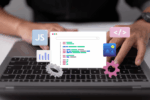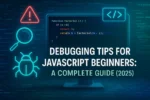What Developers Should Know About the Latest Version of Laravel

In the ever-evolving world of web development, staying current with frameworks is essential. Laravel has long been a favorite among PHP developers for its elegance, simplicity, and powerful ecosystem. With each new release, it brings a wave of enhancements that not only simplify coding but also boost performance and developer satisfaction.
If you’re wondering what’s new in the latest version of Laravel, this detailed guide covers everything—from performance updates and new features to real-world applications and upgrade strategies.
Why Laravel Remains the Framework of Choice
Before diving into the latest updates, it’s important to understand why Laravel continues to dominate the PHP framework scene. At its core, Laravel is designed to take the pain out of development by offering:
- Clean and readable syntax
- Modular packaging and dependency management
- Integrated tools for routing, authentication, and testing
- A thriving community and comprehensive documentation
With this strong foundation, each new version of Laravel only builds upon an already solid base.
A Look Inside the Latest Version of Laravel
So, what makes the latest version of Laravel stand out? The newest release introduces a variety of improvements aimed at increasing efficiency, code cleanliness, and ease of use. Let’s take a closer look at the standout features.
1. Laravel Reverb – Real-Time Made Simple
One of the most anticipated additions is Laravel Reverb, a powerful new solution for real-time broadcasting. Reverb makes it easier to build features like chat apps, notifications, or live dashboards without relying on third-party services. Integrated directly with Laravel’s broadcasting system, Reverb supports scalable, efficient event handling that’s developer-friendly.
2. Enhanced Laravel Prompts for CLI Interactions
The artisan CLI tool now supports Laravel Prompts, a beautiful new way to collect user input through the terminal. Whether you’re building scaffolds, creating migrations, or customizing settings, prompts now feel more interactive and intuitive, with features like:
- Auto-complete
- Multi-select options
- Inline instructions
- Better UX formatting
This update enhances productivity for developers who prefer working in the terminal.
3. Smarter Route Caching and Performance Gains
Performance has always been a priority for the Laravel team, and the latest version of Laravel continues this tradition. Thanks to improvements in route caching, bootstrapping time has decreased, allowing applications to run faster, especially at scale.
Also, Laravel’s support for PHP 8.3 introduces better type handling, reduced memory usage, and improved runtime performance across the board.
4. First-Class Developer Experience with Laravel Pint
Code formatting matters—and Laravel Pint, now more integrated than ever, ensures your code stays clean and consistent. Pint uses the best practices from Laravel and community coding standards to format your PHP code automatically. It’s fast, easy to set up, and fits right into your CI/CD pipelines.
5. Improvements in Laravel Breeze and Jetstream
Laravel’s starter kits have been refined in the latest release. Whether you prefer the simplicity of Breeze or the more feature-rich Jetstream, setting up authentication, team management, and dashboards is quicker and more intuitive.
Both kits now support additional scaffolding options and improved frontend presets (Tailwind, Vue, React), allowing for more customization right out of the box.
Seamless Upgrades with Backward Compatibility
One concern developers often have when a new version drops is migration. Thankfully, the Laravel team puts a strong focus on backward compatibility and documentation.
The official upgrade guide walks you through the step-by-step process to migrate your application smoothly. Tools like Laravel Shift can even automate this process, reducing downtime and development friction.
Real-World Applications of the Latest Laravel Version
Businesses and developers worldwide are already leveraging the new features in real-world applications. Here’s how:
- E-commerce platforms are utilizing Laravel Reverb for live customer support chats and real-time inventory updates.
- SaaS products are adopting the new Jetstream upgrades for user management and onboarding.
- Agencies and freelancers are using Laravel Prompts to speed up boilerplate generation in CLI-driven environments.
These changes are not just cosmetic—they’re helping teams build faster, launch quicker, and scale smarter.
Community Support and Ecosystem Strength
Laravel’s community is one of its greatest strengths. With forums, Discord groups, Laracasts tutorials, GitHub contributions, and local meetups, developers have access to a massive support system. The ecosystem continues to grow with tools like:
- Laravel Forge for server management
- Laravel Vapor for serverless deployment
- Laravel Nova for admin panels
- Laravel Octane for high-performance hosting
This ecosystem is fully compatible with the latest version of Laravel, giving developers even more tools to streamline their workflow.
Final Thoughts: Should You Upgrade?
The latest version of Laravel is more than just an update—it’s a leap forward in performance, productivity, and developer experience. Whether you’re starting a brand-new project or managing a legacy app, upgrading to the newest version offers:
- Faster development
- Cleaner code
- Better performance
- Modern real-time features
- A stronger CLI interface
For developers serious about staying current in the PHP landscape, upgrading to the latest Laravel release is a smart, forward-thinking move.






